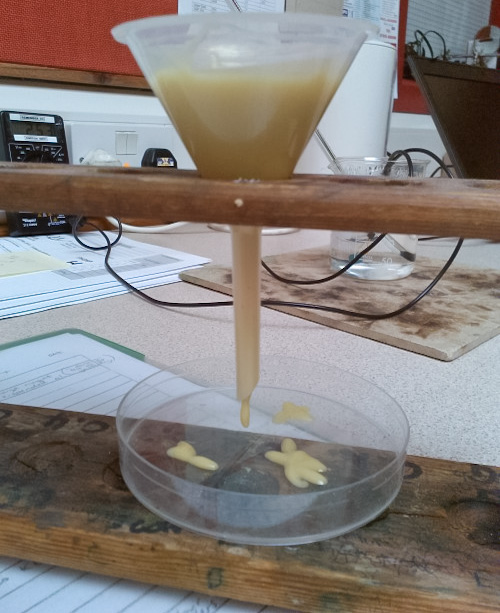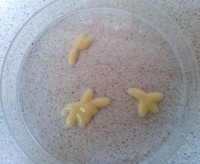
Fed up with waiting 10 years for a drip of pitch to fall? Try Silly Putty instead.
By Matin Durrani
In case you haven’t seen it yet, I do encourage you to read our feature article from the May issue of Physics World about the now-famous pitch-drop experiment at Trinity College Dublin. This simple funnel of pitch shot to fame last year after a drop from it was finally observed falling for the first time – with a video of the dripping drop having so far been viewed more than two million times on YouTube.
Although it was the first time that a drop had been seen to drip from the Dublin funnel, it’s thought that other drops would have fallen about once a decade since the apparatus was set up in 1944. Be that as it may, Trevor Cawthorne from Queen Elizabeth’s Grammar School in Horncastle, Lincolnshire, UK, e-mailed me this morning, pointing out – quite rightly – that “10 years is a long time to wait for the results of an experiment”.
He and his pupils therefore decided to speed up the process using a funnel filled with not pitch, but Silly Putty – the fun material that can be rolled into a ball that will bounce when thrown against a wall, yet will spread out like a liquid if left for a few hours.

Some of the shapes formed when drops of Silly Putty fall.
“We put a ball of putty in the funnel and by the end of the day it had taken on the shape of the funnel,” Cawthorne writes. And rather than waiting for 10 years, the first drop emerged just days later. “The putty drips about once every day, although it is slightly less frequent during the winter,” he says.
Even more interesting is that using Silly Putty lets you see the effect of many drips within a realistic timescale. The putty is held by a thin thread as it falls that causes the putty to “lay out in an apparently random direction”, explains Cawthorne, who’s head of physics at the school. As a result, some pretty patterns are produced on the Petri dish lying below the funnel – see picture, right.
All of which has got me thinking – what other examples of “slow science” are there out there? Let us know and we’ll put together a list of the best.
I like cornflour tricks myself. Mix up some custard powder with a bit of milk and it’s a solid that can crack, and it flows. Then put it on top of a speaker, like this.
I like silly putty too. Google on silly putty continental drift. Plus, you know about the balloon analogy for the expanding universe? The pressure of the air is balanced by the tension in the skin. Adding more air isn’t allowed because that breaches conservation of energy. But making the skin out of silly putty doesn’t. The balloon expands so the tensile strength of the skin gets weaker so the balloon expands. Tension is negative pressure, which is what people say dark energy is. Space itself is like silly putty! How cool is that!
Shane Bergin (Trinity Pitch Drop) here. The work by the students at Queen Elizabeth’s grammar school looks fantastic. I’d be happy to Skype them if they email me (berginsd@tcd.ie) and we can discuss their findings
Trackback: Blog - physicsworld.com